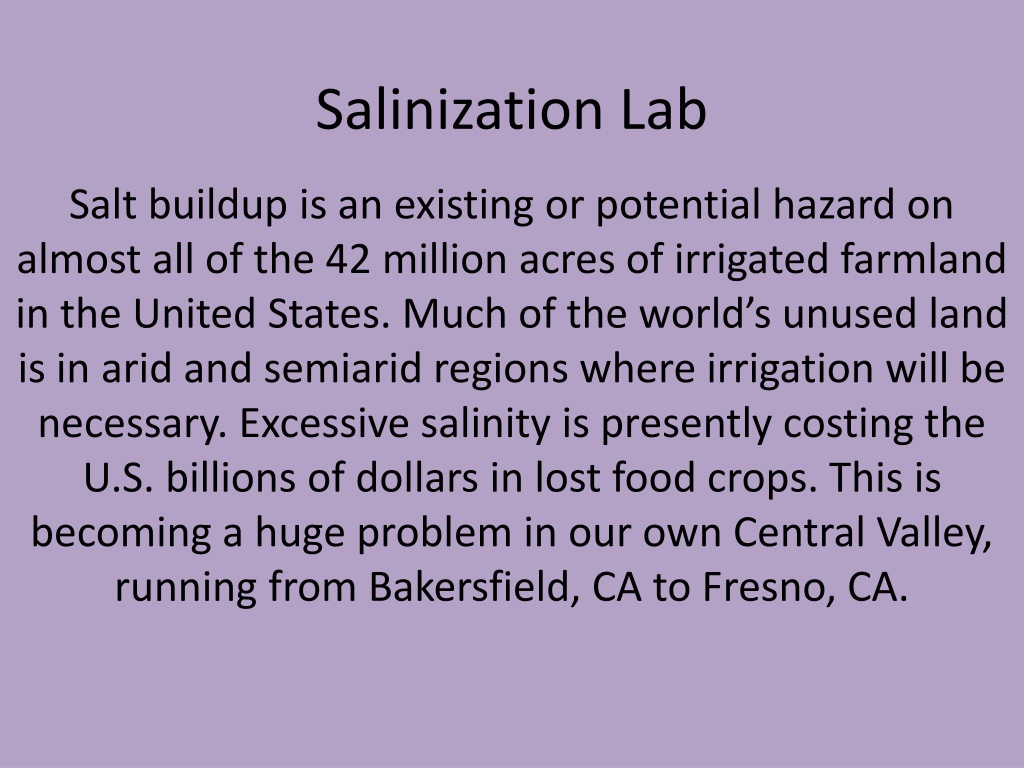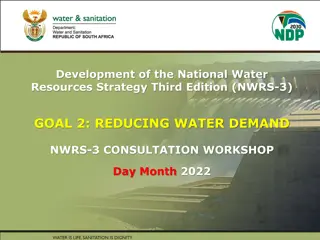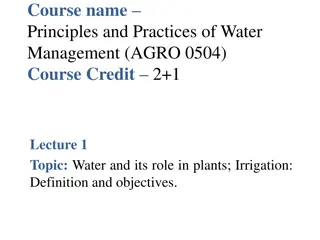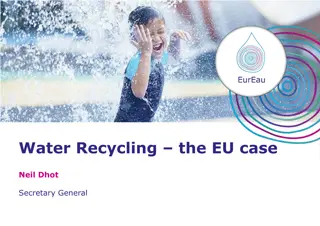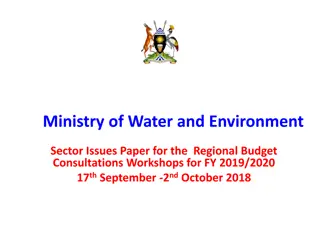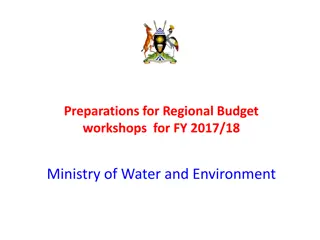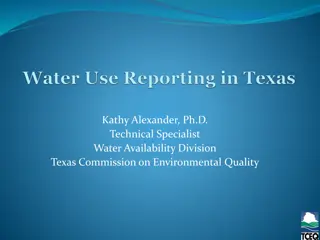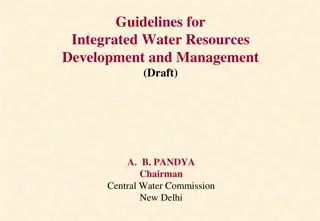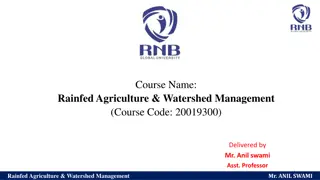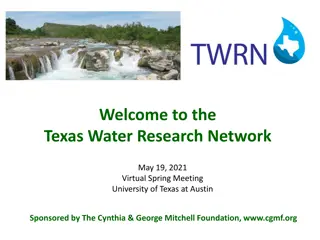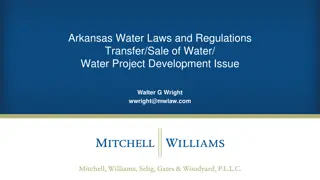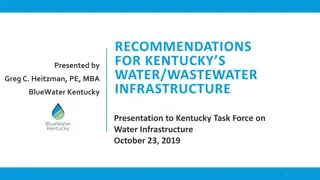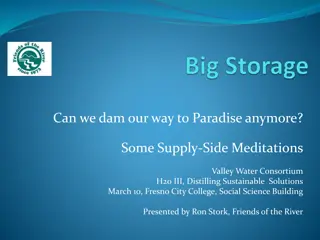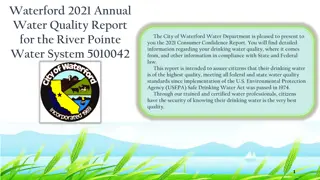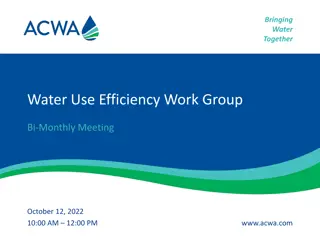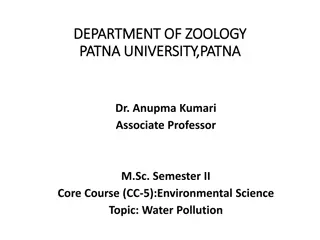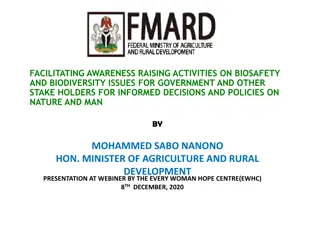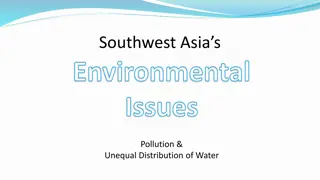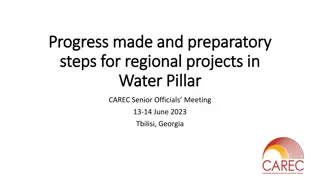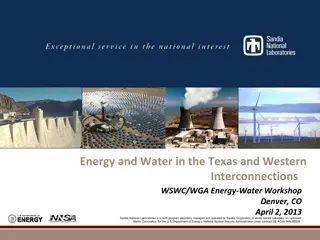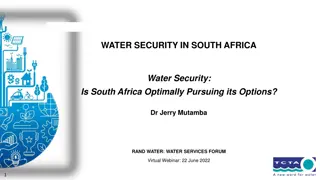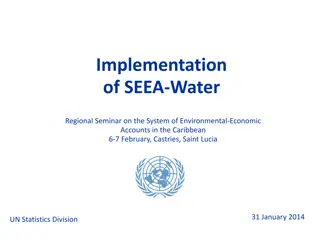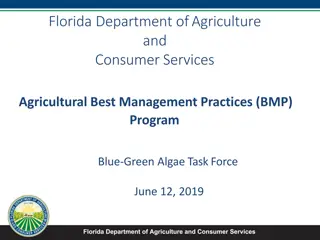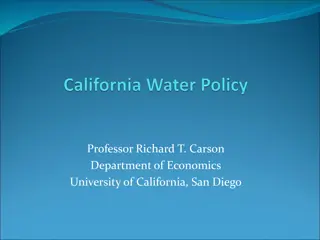Understanding the Impact of Salinization on Agriculture and Water Resources
Salinization poses a significant threat to agriculture, especially in areas like the Central Valley, leading to lost food crops and economic repercussions. The intrusion of saltwater into aquifers due to excessive irrigation contributes to the problem. Research and lab studies focus on the effects of salinity on germination rates, with implications for water quality and crop growth. Addressing salinization is crucial for sustainable farming practices and water resource management.
Download Presentation

Please find below an Image/Link to download the presentation.
The content on the website is provided AS IS for your information and personal use only. It may not be sold, licensed, or shared on other websites without obtaining consent from the author. Download presentation by click this link. If you encounter any issues during the download, it is possible that the publisher has removed the file from their server.
E N D
Presentation Transcript
Salinization Lab Salt buildup is an existing or potential hazard on almost all of the 42 million acres of irrigated farmland in the United States. Much of the world s unused land is in arid and semiarid regions where irrigation will be necessary. Excessive salinity is presently costing the U.S. billions of dollars in lost food crops. This is becoming a huge problem in our own Central Valley, running from Bakersfield, CA to Fresno, CA.
Ground Water Water Model Demonstration Salt water intrusion to field crops along the central valley. http://www.envisionenviroed.net/images/e3000_aquifer_a.jpg
300 ml H2O % Change Germination 100 ml H2O Germination # Dates % NaCl % NaCl 1 10 seeds V2 V1/V1 x 100 8/25 8/26 8/27 8/28 8/25 8/26 8/27 8/28 8/25 8/26 8/27 8/28 1.0 % = 1 g NaCl Calculate the % [NaCl] in 300 ml H2O 0 0.5 1 8/28 1.5 2 2.5 3 3.5 4
Salinization Irrigated water contains salt. The ground where the crops are planted increases in salt concentration. Type of soil, and drainage can impact water quality. Evaporation of water leaves salt behind. In our Lab, what is the Control? 0% [NaCl] Independent Variable: [NaCl] (what you changed) Dependent Variable: Germination Rate (the result of your change)
Groundwater Salt water intrusion Saltwater intrusion- when the pumping of fresh water out of a well is faster than the recharge. Near coastal areas this can cause salt water to infiltrate the aquifer.
Lab Report - Salinization Introduction: Research 3 recent articles about salinization with in the last 10 years. Preferably at least one in CA. Cite your sources. APA (McAllister, 2016)w/ works cited page. What Materials did you use? List them: Petri dish Salt Blah Blah
Lab Report - Salinization Hypothesis: If, than & testable. Procedure: List Steps Step 1: Blah Blah Step 2: Still Blah Blah Step 3: etc. Date: Data Table 1: Explanation Sentence above Table 1 Data Graph 1: Explanation sentence below Graph 1
Lab Report - Salinization Data Analysis Refer to your data: As you can see in Data Table 1. Discuss your data and what it means. Discuss the implications of Salinization for the State, Country and World. Discuss any potential problems with your lab/ mistakes etc. What would you do differently next time? What solutions are there for Salinization?
Lab Report - Salinization Conclusion: What did you learn, Why is it important, how can it help you better understand the Triple Bottom Line?
